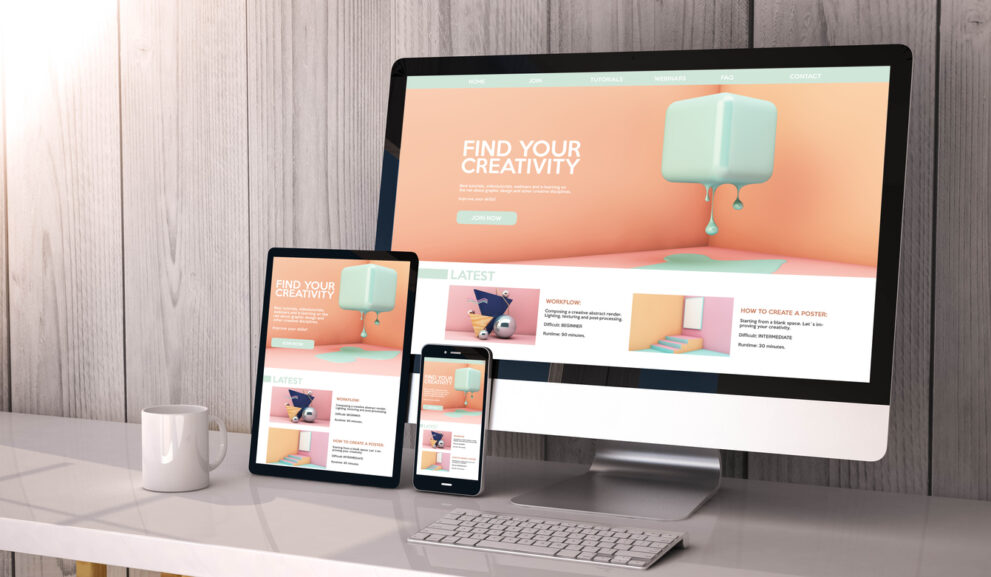
User interface design includes a number of different elements, each of them playing a significant role in the effectiveness of the user experience and conversion rate. While we tend to think about the larger components such as images, text and navigation, however even smaller elements such as buttons still require attention in order to meet their objectives.
Despite being a small page component, there’s actually a lot that can go wrong when it comes to a Call To Action, in fact a badly positioned or badly designed CTA could cause website owners to lose their audience for good.
But don’t worry, luckily there’s been plenty of extensive research and development carried out regarding CTAs, creating an innovative, effective CTA has never been more simple.
What Is A CTA?
A call to action (CTA) is an interactive element on a website, email or app with the aim to encourage audiences to take a specific action, for example, to sign up, subscribe or make a purchase. Not only this, but a CTA provides direction, encouraging focus to a website, without CTAs a site would have no purpose, there’d be no action to carry out.
Predominately used for lead generation, encouraging sales and sign up forms, CTAs need to be compelling, they need to immediately attract the attention. A powerful CTA is necessary for those looking to take their business to the next level.
Using CTAs
Call to actions can be used in a number of ways, shapes and forms, it’s just important to use them correctly! When used correctly CTAs grab attention, enticing them to click, not only appearing visually appealing but also including persuasive content too.
But how do we achieve an effective call to action?
Apply Contrasting Colours
Colour choice varies from website to website and while it can be tempted to include colours that all stay within the same shade within a design, when it comes to CTAs contrasting colours offer huge potential. When choosing colours for call to actions such as buttons and backgrounds, its vital to use colours that are contrasting enough to stand ours from other UI elements such as images and videos. For example, when using a blue background, it’s a good idea to use a colour such as yellow for CTAs.
Focus On Value
Before a user completes a call to action, they need to understand what this means for them, will it benefit them? How will it solve their problem? Many are cautious about how they interact with buttons online, it’s important to build trust with users by clearly communicating what will happen when they complete a call to action, showing them they’re not going to lose out or be negatively impacted by actions they complete on a site or app.
Mute Secondary Buttons
Secondary buttons suggest that there are other options available to the user and while this isn’t a bad thing, for those looking to encourage audiences to carry out a specific action, muting these secondary options is a good plan. Pushing your other buttons to the background brings out the main -more important- CTA in the foreground. Not only does muting secondary buttons look great it’s another factor that drives focus, increasing clickability of CTAs.
Use Of Whitespace
Whitespace, or negative space, is the ‘empty’ area between the elements of a page, for example, the whitespace between images and text content. Often something that website owners dispute with designers, whitespace is a necessary design element and can hugely benefit CTAs. If a website features too much content a CTA can get lost on the page, whereas the correct amount of whitespace helps break up text and call to actions become more noticeable.
Actionable Text
It’s not just the visual aspect of a CTA that matters, there’s also the copy. With very little room for text content and the need for a captivating line, CTA copy needs to count. Avoiding complicated terminology and formal wording call to actions need to include persuasive, actionable terms such as “call now”, “click here” and “buy today” utilising the power of suggestion, as well as possibly even adding a sense of urgency.
Continued Testing
The golden rule of CTAs is that they need to be tested! It’s impossible to tell which call to actions work the most efficiently without solid A/B testing. Through user research and analysis, designers can gain an understanding of how audiences interact with specific buttons and components. A/B testing compares two versions of a CTA in order to understand what performs best, with whichever one is performing better then determined as the more effective CTA to use.
Start Using Effective Call To Actions
In order to make a powerful CTA, there needs to be a focus not only on the visual elements but also on objectives. A call to action needs to include appropriate colours, size, placement and copy! How does your call to action reflect your brand? Perhaps it’s time that it does.






